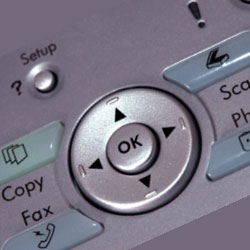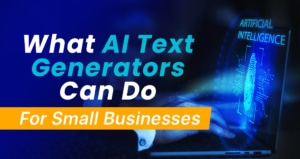Latest multifunction devices enhance workflow automation with app integration and programmability.
 Businesses have pursued the promise of the “paperless office” for the past 40 years, but the reality is that companies of all sizes still rely heavily on printed materials. The legal, insurance, education and advertising markets are particularly dependent upon paper documents as key elements of their workflow. As such, multifunction peripherals (MFPs) that combine copy, print, scan and fax functions greatly enhance productivity and communication in many offices.
Businesses have pursued the promise of the “paperless office” for the past 40 years, but the reality is that companies of all sizes still rely heavily on printed materials. The legal, insurance, education and advertising markets are particularly dependent upon paper documents as key elements of their workflow. As such, multifunction peripherals (MFPs) that combine copy, print, scan and fax functions greatly enhance productivity and communication in many offices.
However, the latest generation of MFPs feature a level of programmability that can actually push the needle a little closer to paperless capabilities. With intelligent processing, distributed document capture and other functions, so-called “smart MFPs” are making it easier to integrate paper documents into digital workflows and create new ways to share and manage information.
“We’re still a long way from the ‘paperless office,’ and given the long-term reality of a combination of printing and scanning, multifunction printing devices will be crucial to companies for years to come,” said Randy Dazo, Group Director at InfoTrends. “Too many people think the printer is the device in the corner collecting dust; in reality, it’s crucial to office productivity and is a significant operations expense.”
One-Touch Workflows
Smart MFPs (SMFPs) make it easy to share digital and paper documents with all the devices on a network through either wired or wireless connections. Easy-to-use interfaces and embedded programming capabilities allow tight integration with key business applications. One-touch automated scanning ensures relevant information about a document is captured at the time it is scanned, stores the document in a centralized location, and automatically applies indexing and forwarding options.
Take for example a mortgage application: After an applicant fills out all the necessary paperwork, a loan originator might scan all the documents, then access them at a desktop computer and make notes before emailing everything to everyone involved in the approval process. SMFP applications allow users to integrate scanning, optical character recognition and document distribution into a single workflow, which can then be saved as a one-touch shortcut for future use.
From a simple printing standpoint, SMFPs support a more mobile workforce by allowing users to print from any device without print drivers, USB cables or Bluetooth pairing. That is a capability that should not be overlooked. According to IDC, 40 percent of smartphone users and 35 percent of tablet users do not know how to print from their devices. IDC notes that is a problem organizations must address quickly over the next two years due to increasing use of mobile devices for business tasks.
Boosting Security and Efficiency
Despite the fact that mobility and other emerging technologies such as big data, social business and cloud are raising security concerns, IDC finds that three-quarters of SMBs have no document security system in place. IDC notes that SMFPs support network security with authentication and encryption capabilities, and can be programmed for additional security measures such as “pull printing.” This feature can virtually eliminate the risk of unclaimed documents by allowing files to be produced only when the user is physically at the device and has either swiped a security card or entered a PIN code.
IDC claims that legacy document-related challenges are wasting time and causing a 20 percent loss in employee productivity — the equivalent of more than two working months a year. In a whitepaper entitled “Are your business processes stifling your market opportunity? Cost-efficient print and document management through smart MFPs,” IDC says the latest SMFPs improve workflow and productivity by facilitating smarter business operations and process efficiencies.
“Acting as on-ramps and off-ramps to the cloud, smart MFPs extend the utilization of the device from primarily printing and copying paper-based pages to a customizable digital transformation tool, enabling companies to capture, integrate and communicate information,” the report states.


